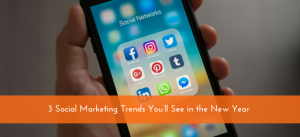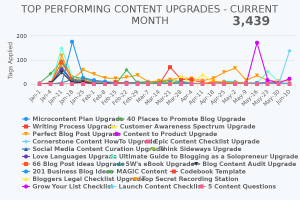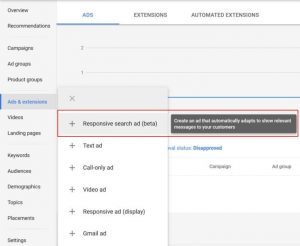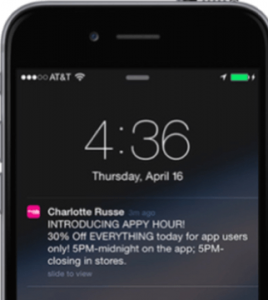Did you know that 8 out of 10 people will read your blog post headline but only 2 out of 10 will bother to click on it and read your content?
I looked at the most cutting edge research and combined it to create an infographic detailing exactly what constitutes a killer headline.
Infographic source: Jadite Inc
So here’s my take on what makes headlines irresistible.
1. Negative Superlatives
According to Outbrain.com, headlines with negative superlatives get a higher CTR than headlines with positive superlatives. They analyzed approximately 65, 000 paid link titles that ran in their network between April and July of 2012.
My Take:
So I did my own little research…
I typed two different phrases on Google: “25 things you should stop doing now that you’re 25” vs. “25 things you should start doing now that you’re 25”.

I decided to go with the first two results that came up on Google since one was a positive headline and the other was a negative one. And the two posts were from the same blog…, which was great because I could make a real comparison.
I used Buzzsumo to see which of the two posts got the most shares. And this is what I found…
As you can see, the title “25 things you should start doing now that you’re 25” got 13.4k shares on social media.

And the post with the title “25 things you’re too old for now that you’re 25” got 41.2k shares on social media.

So why do positive headlines seem to perform poorly compared to negative ones?
Well, there are a few theories on why this might be:
- Positive superlatives have been overused so people don’t really care to click on headlines with words like “best”, “always”, etc.
- Negative headlines activate the element of surprise. For instance, it’s unexpected to come across a blog post that talks about what you should STOP doing once you turn 25. So when you come across such a title you’re more intrigued to click on it.
- Negative words make people curious. When you see a headline stating you should STOP doing these things when you turn 25, you’ll click on it because you want to find out if there’s something you’re doing that you should stop doing.
2. Odd Numbers
Outbrain analyzed over 150, 000 titles and found that titles with odd numbers had a 20% higher click through rate than headlines with even numbers.
My Take:
To find out how true this was, I once again went to Google. This time, I typed “20 ways to open a beer bottle”
Three results came up but the first one was a video. So I decided to go with the second and third post.

As you can see, “20 ways to open a beer bottle” got fewer social media shares than “21 ways to open a beer bottle”. This is despite the fact that the posts ranked differently on Google.


This discovery led me to one interesting conclusion….
Traffic from social media does not necessarily influence your rankings on Google. Clearly, the Buzzfeed post had plenty of shares but still ranked lower than the Popular Mechanics post, which had less than 100 shares on social media.
3. Brackets
Hubspot analyzed over 3 million headlines and found using brackets in headlines increased CTR by up to 38%.
The reason why brackets make such a huge difference is that they give people a “sneak preview” into your post. So if your post is a free eBook, an infographic or a case study, let people know before they click on it.
My Take:
So which headline are you more likely to click on between these two?
“The leading causes of divorce in America” or “The leading causes of divorce in America [A case study]”?
4. Violent Language
Startupmoon.com reviewed posts from over 100 blogs and they found something interesting.
They discovered titles that made use of certain words or patterns were among the top 20% of search engine results. Titles with words like “War”, “fear”, “kill””, “deadly”, “dark,” “bleeding”, etc. got more shares.
And by the way, their research was on tech blogs so the posts didn’t contain any information related to bleeding, war or killings.
My Take:
I used Buzzsumo to find out if using violent language actually increased CTR and social media shares.
I compared two headlines…
“Great blog post ideas” and “killer blog post ideas”.
And these were the results…
Results for “great blog post ideas”

Results for “killer blog post ideas”

From this information it’s clear that violent language in headlines seems to entice people to click and share posts.
5. Big numbers
Headlines with bigger numbers do better because numbers add drama and specificity to a headline. It’s even better if you put a number at the beginning of a headline instead of at the end.
My Take:
So I typed into Google “websites that pay you to write”…

I analyzed these two posts using Buzzsumo and these were the results:


As you can see, these two blog posts are from the same website and there’s a huge difference between the number of social media shares each one got.
The post with the biggest number in its headline got a lot more shares than the other one, which proves that the bigger the number in your headline, the higher the CTR.
6. Bold claims
Ripenn analyzed 2,616 headlines from websites known to elicit clicks. They analyzed websites like Wimp, ViralNova, UpWorthy and Buzzfeed and found they didn’t shy away from making bold claims in their titles.
My Take:
I decided to find out if any of these sites made any bold claims in their titles and if they did, were they getting as much buzz as Ripenn claimed? So I chose to go with Buzzfeed.
And here’s what I found:

The first post on Buzzfeed got over 2 million shares. The bold claim in their headline was “Make you re-evaluate your entire existence…”. The second post got 1.4 million shares and its bold claim was “things you know only if you’ve been best friends…”. So bold claims do increase CTR.
7. Action words
Danzarrella.com analyzed over 200, 000 links containing tweets and found that tweets which had more adverbs and verbs had higher CTRs than tweets which had nouns and adjectives.
My Take:
Titles aren’t the best place to place a bold call to action. If you want great results, your call to action has to be discreet or implied. Viral sites have discovered a way to use action words in their headlines without putting off their readers.
Below is an example of what wimp.com has done with some of their most shared posts in the past year. Note how they use the word “watch” as their discreet call to action in their headlines.
What Do You Think?
Now that you know what makes an irresistible headline, don’t forget that great content also counts. You can grab your readers’ attention with your killer headline but if your content stinks, you stand a slim chance of keeping them around.
If you think I’ve left out a key ingredient that makes headlines irresistible, let me know in the comment section below.
P.S. If you got something from this post, feel free to share it.
This article was originally posted at Jadite Inc.
(166)
Report Post








